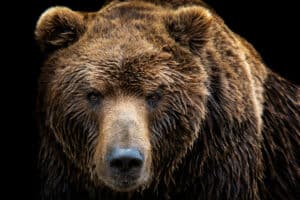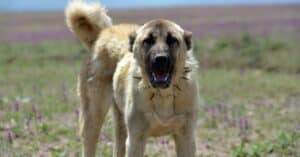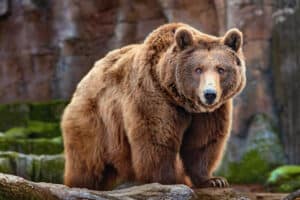When you’re out hiking and exploring the woods, poop, or scat as it’s commonly called, is all around you. Some of it is easy to identify, but some types are not. Today, we’re comparing two wild animals’ poop commonly found in the same areas. Read on to understand deer poop vs. bear poop and how to tell the difference.
You’ll feel more comfortable hiking those woods once you can distinguish bear poop from deer poop.
6 Main Differences Between Deer Poop and Bear Poop
Bear and deer share similar habitats and diets, but their poop is very different. Here are the main contrasts:
- Bear poop is much larger than deer poop.
- Deer poop is bullet-formed, but bear poop is tubular.
- Bear poop smells bad if meat is a high proportion of the diet, whereas deer poop barely smells.
- Deer poop is smooth and shiny, whereas bear poop contains fragments of bone or fibrous plant waste.
- Deer poop is dark brown, but bear poop ranges from black to brown to green and even red.
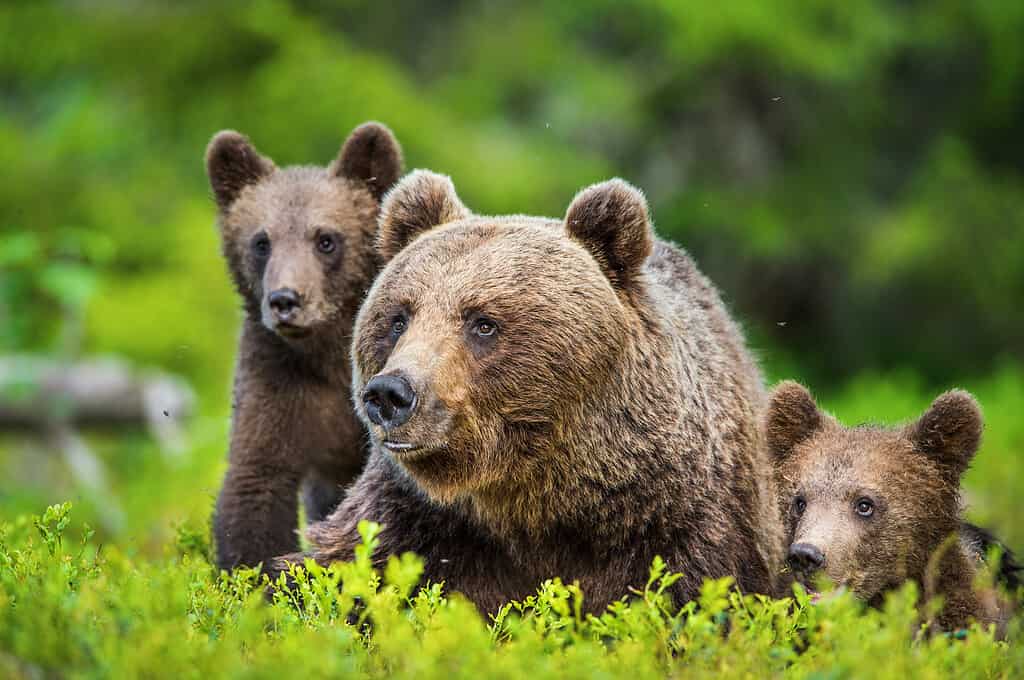
Bear poop smells bad if meat is a high proportion of the diet, whereas deer poop barely smells.
©iStock.com/USO
1. Deer Poop vs. Bear Poop: Size
- Deer poop: around an inch
- Bear poop: 5-12 inches
Deer poop is pretty small. Each hard pellet measures between 0.78 inches and 1.2 inches (2 by 3 centimeters). Deer chiefly creates large piles of many small pellets, and it’s surprising how tall these piles grow. A pile of deer poop might reach 6 inches in height.
Bear poop is much larger than deer poop. Whereas deer produce small hard pellets, bears have 5 to 12-inch long by 1.5 to 2.5-inch-wide segments. It’s very similar to human-sized feces, but in late summer and early fall, bear poop piles are often looser and larger due to their seasonal diet of berries and nuts.
2. Deer Poop vs. Bear Poop: Shape
- Deer poop: bullet-shaped
- Bear poop: tubular and cylindrical
Deer poop is one of the easier scats to recognize due to its distinctive shape. Each pellet is bullet-shaped with a point on one end. The point is where the sphincter closes on the pellet.
In contrast, bear poop is tubular with a slightly taped blunt end. In spring, it is chiefly fibrous and cylindrical due to a mostly vegetation-based diet, but during fall, scat may appear rounded or even loose like a cow poop pile. This is from lots of berries and nuts!
Due to their repetitive diet, deer poop remains the same shape year round, whereas bear poop is changeable and reflects what they find to eat each season.
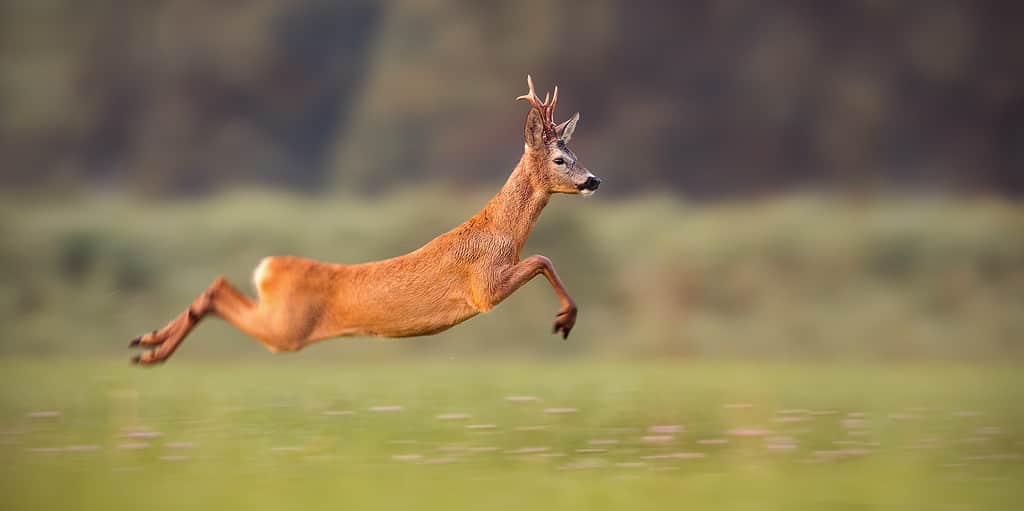
Deer poop is one of the easier scats to recognize due to its distinctive shape.
©WildMedia/Shutterstock.com
3. Deer Poop vs. Bear Poop: Color
- Deer poop: dark brown
- Bear poop: black, brown, green
Deer scat is dark brown to almost black because they eat green or woody vegetation. It also appears shiny and even reflective due to its heavy vegetation content.
Bear poop changes color depending on the season. In spring, bear scat may appear green due to a grass and insect diet. Then, in summer, when they eat more meat, their scat may appear dark brown and black. In fall, bear poop may turn various shades of green, brown, and even red depending on what berries and fruit they eat. Small pieces of berries and nut fragments may retain their color.
4. Deer Poop vs. Bear Poop: Appearance
- Deer poop: Smooth and shiny
- Bear poop: fibrous, filled with fragments
One important thing to bear (no pun intended) in mind is bear poop varies significantly depending on diet. It can range from wet black poop to rigid, tubular, and green.
Ruminant deer eat grass and vegetation all year round. Their digestive system processes it thoroughly, and they poop numerous times each day. This means their scat is smooth and shiny. Rarely will you see pieces of undigested grass in deer poop. Deer poop less than 12 hours old remains shiny and dark, but after 24 hours, it lightens to pale brown and loses its shine.
There’s one slight difference between summer and winter deer scat. When deer eat winter’s twigs and mosses, their poop is hard, but in spring, when they consume soft new foliage, their poop may appear a little squishier. It’ll still form a bullet and look nothing like bear poop.
Bear poop is frequently full of plant fragments, bugs, and animal carcasses. Bone parts include sheep, elk, and moose. In coastal areas or near rivers, bear poop retains fish bones, fins, and tail fragments.
5. Deer Poop vs. Bear Poop: Smell
- Deer poop: barely any scent
- Bear poop: meat-eating bear poop smells bad
Fragrance-free deer scat barely emits any scent. A steady diet of greenery and frequent bowel motions ensures deer produce non-smelly pellets.
In contrast, meat-eating bears produce smelly poop. However, when they chiefly eat vegetation in spring and fall, their poop does not smell so bad.
6. Deer Poop vs. Bear Poop: Amount
- Deer poop: many small pellets in a pile
- Bear poop: small or large segments
Piles of small pellets are indicative of deer poop. Biologists estimate that white-tailed deer poop up to 20 times a day — that’s a lot of poop! Often, their bullet-shaped pellets form a pyramid.
In contrast, a bear may poop a lot or just a small amount. Because bears have such a varied diet, their poop varies too.
Does a Bear Actually Poop in the Woods?
- Deer: fields, meadows, forests, gardens
- Bears: tree bases, trails
Yes, a bear does poop in the woods, and it’s usually around tree bases. If you spot bear poop and claw marks on trees and surrounding soil, then you’re in bear territory. Bears also poop when stressed or tired.
Deer often poop near sleeping areas, so more than one pile of poop might indicate you are standing near a deer-inhabited area. Otherwise, deer scatter poop as they are eating or walking about their territory. Deer defecate in wooded areas, trails, meadows, and gardens.
Did you know that fawns won’t defecate in or near their hiding space? Because babies poop when nursing, a doe will always move away from the hiding space to feed her young. Mothers also eat their fawn’s poop so predators can’t sniff them out. However, bear mothers don’t eat their young’s poop.
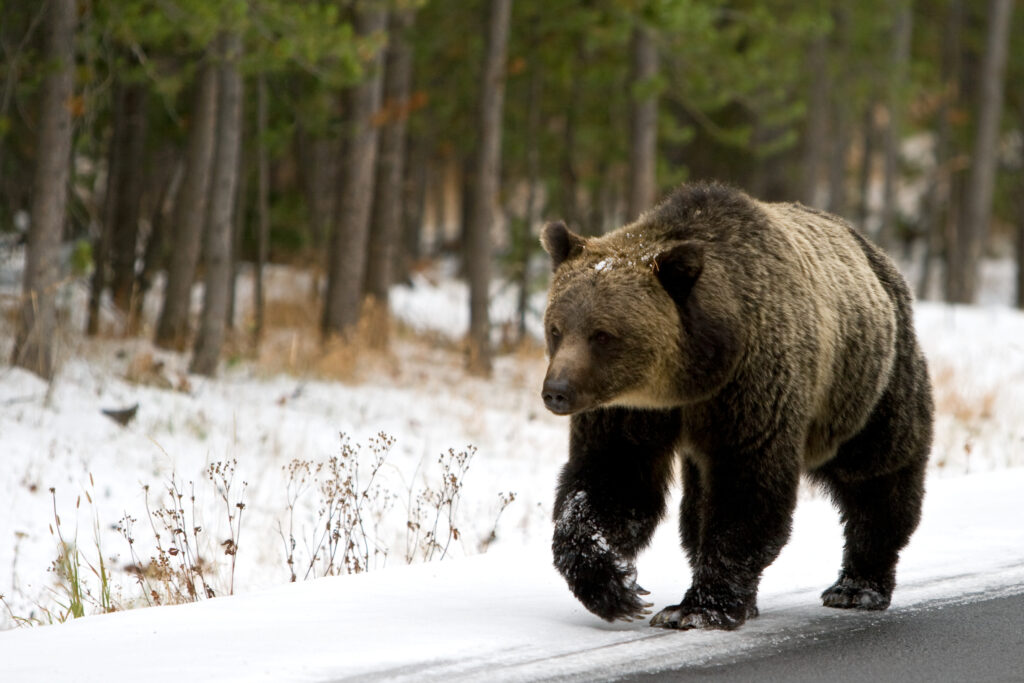
If you spot bear poop and claw marks on the trees and surrounding soil, then you’re in bear territory.
©Paul Knowles/Shutterstock.com
Is Bear or Deer Poop Dangerous?
- Deer poop: Bacteria, parasites, histoplasma
- Bear poop: Bacteria, parasites
Bear and deer poop certainly isn’t something you’d want to ingest or get in your eyes. It’s a health hazard because both species’ feces contain E. coli bacteria and parasites like giardia and worms. Deer poop potentially contains histoplasma, a fungal spore that causes lung infections.
If you need to touch it to wipe it away from your shoes or clothing, use gloves and wash your hands thoroughly.
Deer and bear droppings cause issues when dogs eat them too. Parasites, infections, and smelly breath are not fun to deal with. If you spot deer or bear poop, make sure Rover is on a leash to prevent him from gobbling it up. In bear country, Rover ought to be on a leash for the whole hike.
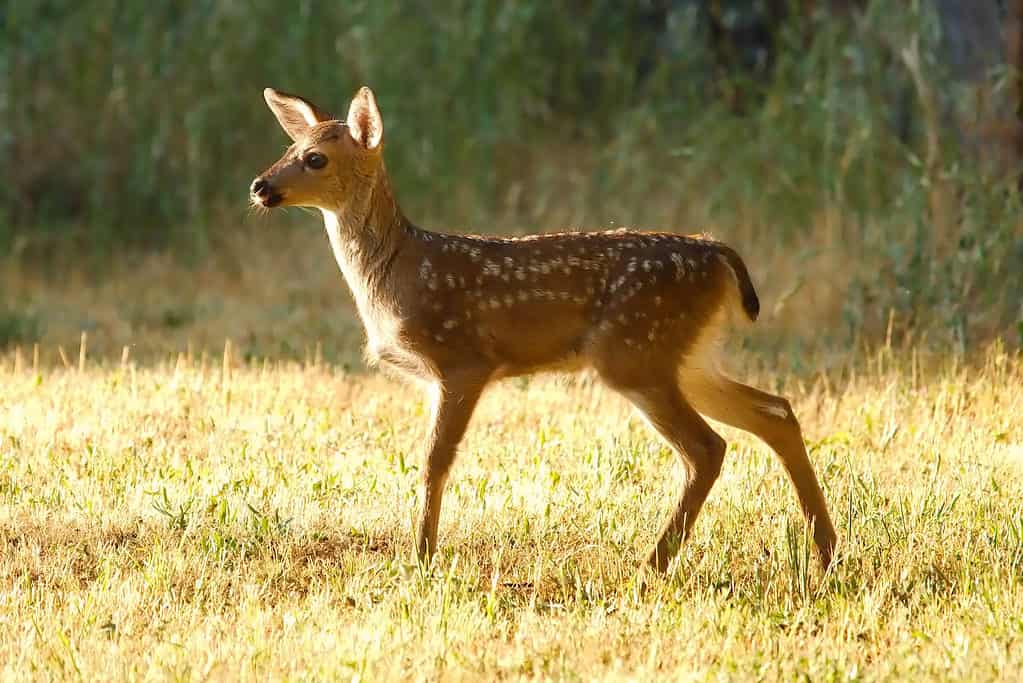
Both species’ feces contain
E. colibacteria and parasites like giardia and worms.
©Dennis Blum/Shutterstock.com
Differences Between Deer and Bear Poop
In general, deer and bear poop are very easy to tell apart.
Deer poop is chiefly brown, bullet-shaped, small, and presented in piles. A bear’s scat ranges in color and consistency from black to green. Most often, bear poop contains fragments from their diet, like bones or berries, which you won’t spot in shiny, smooth deer pellets.
Bear poop indicates bears live in the vicinity. When hiking on bear-pooped trails, always carry bear spray, keep dogs on a lead, and keep your wits about you.
The photo featured at the top of this post is © Sandra-Dombrovsky/Shutterstock.com
Thank you for reading! Have some feedback for us? Contact the AZ Animals editorial team.



